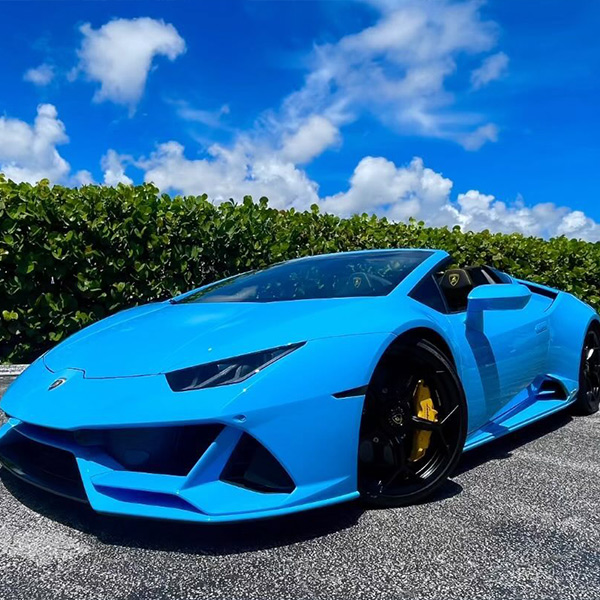
Can I Cover Marks with Ceramic Coating?
Can I Cover Marks with Ceramic Coating?
There are many misconceptions about ceramic coating. The name itself lends itself to this, with the word “coating” making it sound like it’s a way to camouflage small paintwork discrepancies.
We think it’s about time to put the record straight. The following is an honest, no-nonsense overview of what ceramic coating can and can’t do.
Unless you’re an expert in the subject, you may well be very surprised…
The True Lowdown on Ceramic Coating
- What is ceramic cover coating?
- What is ceramic cover coating good for?
- What can’t ceramic cover coating do?
What is ceramic cover coating?
Ceramic coating uses nano-sized particles that, when combined with a liquid carrier medium, can be applied to the whole surface of a vehicle. This then dries, or cures—to give it the correct terminology—into an uber-hard, completely clear coating that shines in a way that no amount of waxing and polishing can ever achieve.
Seriously… Ceramic coating makes a car’s color extraordinary, with a shine that’s enough to make you weep.
OK, that’s enough gushing about how great it is. Let’s move on to the nitty-gritty of what it can and can’t do for your vehicle’s paintwork.
What is ceramic cover coating good for?
As already mentioned, ceramic coating increases the depth of shine of the paintwork. However, because it does this, it also enhances any little imperfection of the paint. So scratches, whirls, spider webbing, and more will become more apparent.
Sure, from a distance the vehicle might be aesthetically improved. But up close? If the paintwork isn’t correctly prepared and the ceramic coating installed in the right environment, you’ll end up with a vehicle that looks worse than it did before the treatment.
Before we digest and consider that last statement, let’s first say what ceramic coating is good for:
- Great for UV protection: It will prevent the factory paintwork from fade caused by environmental factors
- Protects against scratches: The coating is scratch-resistant, although quite how well it does this depends on the quality of the coating. Small scratches that do occur can often be buffed away entirely.
- Protects from chemical attacks: Such as acid rain, bird dropping, tree sap, salt, and other contaminants.
- Is hydrophobic: Meaning water and the dirt it carries simply bead and roll away. This helps the car stay cleaner for longer, equalling less time and effort in maintaining its good looks.
So, onto what ceramic coating can’t do and the importance of paint preparation.
What can’t ceramic cover coating do?
While the application of ceramic coating will, indeed, seep into any scratches or paint damage, this doesn’t mean that they won’t be noticeable. On the contrary, it will make them more obvious.
This is why any paintwork correction needs to be carried out before a coating is applied. This is done by carefully buffing the area with polish to remove the factory-installed top coat. The process gently wears down the surrounding paint to the same thickness as where the scratch is. Because you’re effectively buffing away some of the paint, this is only possible to do on light scratches, whirls, and spider webbing marks.
Deeper scratches and marks require far more intensive labor, even going as far as respraying the entire panel.
Because of this, it’s most beneficial to apply ceramic coating over a new or nearly-new vehicle that hasn’t yet had much damage to the paintwork—or one that just benefitted from a respray.
If you’re at all in doubt about whether a ceramic coating is worth installing on your ride, you should seek professional advice.
Ready to Pimp your Ride’s Shine and Protect its Paintwork? Call Auto SuperShield Today
At Auto SuperShield, we adore ceramic coating. But we love it for what it can do, rather than any thoughts that it can hide any large or deep paint imperfections. Our highly skilled technicians know exactly how to prepare a vehicle for the ultimate ceramic coating installation. We’ll be completely upfront before carrying out any work, advising on what we can and can’t polish out before application.
That’s just one of the reasons why our customer satisfaction rate for ceramic coating, PPF, and window tints is so high. Our no-bull approach is, we hope, as refreshing as our truly genuine expertise and customer service.
Head to https://www.autosupershield.com/paint-protection-films to find out more and call us today for a no-obligation quote.
Related Posts
How can we help you?
We have an incredibly quick turn around time and have staff ready to take your call!
Email us at your convenience.
We'd love to see your vehicle!
We have staff awaiting your call!







